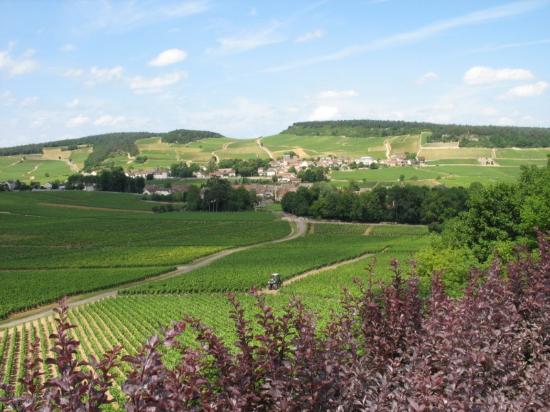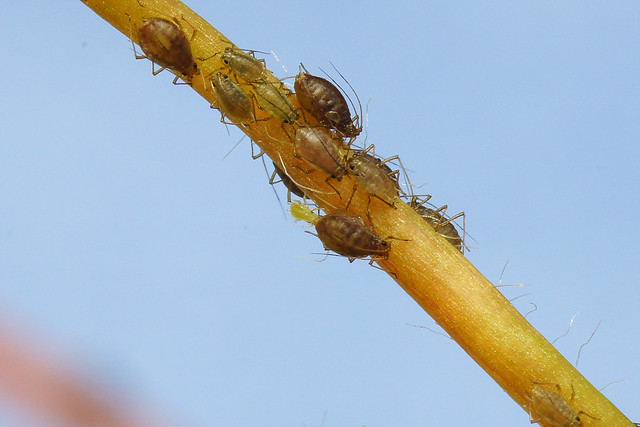The authors of this book have a very interesting background. Don and Petie Kladstrup are writers who work in both Paris and Normandy, France. When these authors are not at work they actually work to restore an eighteenth-century farm and are currently replanting an orchard with rare varieties of apples. These apples are in danger of extinction and they are working diligently to help maintain this variety. Anyway- fun fact and it just shows how dedicated this couple is to preserving historic French vineyards and agriculture! Moving on....
Soldiers first arrive upon a mysterious cave filled with precious wine. This cave near the top of a mountain housed wine that belonged to Adolf Hitler. Nonancourt, the Sergeant who came across the wine cave with his fellow soldiers, was near a small town in the Bavarian Alps called Berchtesgaden, known as the "Valhalla for the Nazi glods, lords and masters". Near the "Eagle's Nest", Hitler and other Nazis (namely Goebbels, Himmler, etc) had houses and retreats they could escape to during the war. The town was also the destination where Nazis sent the looted gold,jewelry, paintings, and other precious items stolen from the places they occupied during the war. Hitler's Eagle's Nest was grand in scope and was a masterpiece of engineering. Down in the cave near the Eagle's Nest was essentially where Hitler put the wine he stole from France- tons of wine placed in a cave at the top of a 8,000-foot-high mountain with steep slopes and with planted land mines.
 |
| insane view for an insane criminal. |
The book is incredibly informative as it reviews not only this story of the Nazis acquisition of France's beloved beverage (and ultimately the reclaim of this precious nectar). This book tells the story of not only the French wine growers who worked diligently to protect their vineyards, but the weinfuhrers who almost brought down he wine empire. Weinfuhrers is a German sounding word made up by the French to designate the men sent by the Nazis to buy French wine and oversee its distribution. These guys were pretty much the bureaucrats who oversaw Hitler's intentions to hoard and pillage French wine regions to help finance the Nazi war efforts. Wine was a very desirable and tradable commodity. Of course, France's wine was both of great bounty and quality. Man, it gets me heated just thinking about it! Boches (derogatory slang name given the Germans)!The tears of the Bordelais! The tragedies of the Champenois! I could only imagine how heart-wrenching it must have been to live like that. To be so utterly scared that one day a group of these weinfuhrers could threaten your life and livelihood and take you for all that you have. This book is a detailed account and story of five well known wine making families in France that had to maintain their wine stocks and their livelihoods during the Nazi occupation in France. I could go on and tell you about the crazy conflict, deaths (just a few), sorrow, and victory of this book- but whats really relevant is all of the specific wine references this books makes- especially references to class. Plus, I really had a bad week and don't want to dwell on the saddening and tragic parts of this book. So no worries, no spoiler alerts needed!
 |
| old wine from before the time of you know who's reign. |
In this book review, I really want to drive home the principals that this book really helps the reader get acquainted with. I actually got a lot of refreshing details and concepts reviewed in class. The book discusses class topics such as Appellation D'Origine Controlee. The AOC regions, as Professor Boyer has explained, are the controlled places of origin. For French wine, this guarantees that the wine not only comes from the place listed (like Bordeaux or Loire) but also meets the strict standards of quality for that area. Example AOC regions referred in the book include Cote D'Or, which literally means the Golden Slope or Escarpment (this is probably the only time I'll use the word escarpment in a sentence). So Cote D'Or is the area of Burgundy between Dijon and Santenay where some of the most delicious Burgundies are made. Reading this book has really encouraged me to want to travel there. Both reds and whites are made in this AOC. The organization that's in charge of designating AOC regions, as the book explains, is the Institut National Des Appellation D'Origine (INAO- the acronym is exponentially easier than saying it in full blown French). The INAO is essentially the administrative organization for guaranteeing place of origin and quality in French wine. The organization is actually based in Paris (I'm actually fairly surprised by this), but the organization also has its most technical experts in each of France's dominating wine regions.
 |
| Burgundy- wish I could be here! |
After reading this book, I not only was dumbfounded by how much French winemakers had to work to protect their vineyards from the Germans, but how they also had to work against mother nature! Its insane! For example, mildew was lethal to grape vineyards. Downy mildew was the worst of the fungal diseases that attacked grape vines during the 1940s. This mildew originated in America (go figure!) Downy or false mildew spread not by birds or bees or by water streams. This fungi actually was spread by the wind so it was difficult to contain it once it attacked a vineyard. Yikes, right? High humidity and heat are the two key ingredients that got this fungal disease started. Most American vines are pretty resilient to it. A treatment for this fungi is copper sulfate. Most American vines didn't need (and still don't need) copper sulfate treatments, but the dainty French vines did (and for good reason- this mildew was disasterous!).

The book also talks about the strike of phylloxera. Just as a little review, phylloxera is a burrowing plant louse that destroyed the vineyards of France at the end of the 19th century. Buzz kill! This was also another import from America (can't be all too proud of that). The cure also came from America though when the native American vine rootstock was found to be resistant to the louse. All French vines had to be ripped up and burned, with new vines grafted onto the American rootstock (amazing- we ruin the day and then save it. 'Murica!) Black rot is another fungal disease that attacks grapevines. This sucker leaves black spots on the green parts of the plant and causes the fruit to shrivel up. Black rot is most "virulent" in warm weather and high humidity. The cure for this fungal disease is a solid treatment of copper sulfate. The last one that we haven't covered in class was oidium. This is another mildew, but its powdery (more true mildew). It came from America and the best method and product to combat oidium was ground sulfur.
 |
| Girl you nasty |
The book also offered some insight on different kinds of wine- not varietals but methods of wine preparation. Piquette, for example, is a wine made by adding water to already pressed skins and husks of grapes. "This wine is very low in alcohol and is usually given to vineyard workers as a daily ration," according to the book. Naturally, piquette is also used as a derogatory name for any bad wine (since water and wine mixed isn't exactly the most delicious thing- though I have to say that when I volunteered at Fork and Cork this weekend people were literally drinking the wash water to clean their red-stained wine classes in between tastings. Is it just me or is that weird!!!) Another interesting wine, or wine component, is dosage. Dosage is the sugar syrup made from champagne wine and sugar that is added to champagne before its final corking. Man, this stuff is probably really delicious. The amount added determines the sweetness of the champagne. The range of champagne is extra brut (extra dry) to doux.
 |
| holla @ me. To the dome. |
Naturally, the drier the champagne, the smaller the dosage of dosage (haha get it?) used. Vin chaud du soldat was also a popular reference in this book. Literally, hot wine for soldiers, was usually served at special canteens during the winter months. This was actually served as a preventative measure during the cold weather. Kits for making hot wine were also sent to soldiers at the front lines. I bet this definitely helped kill bacteria that lined some of the soldier's stomachs (you never knew what could have been hanging out in their stomachs after being at war and eating god knows what). Speaking of eating and drinking panzermilch was a soy beverage some of the prisoners of war got in camps instead of coffee or tea. Literally, panzer milk, the panzers being the German tanks that so effectively routed the French in 1940.
 The book also talks about the strike of phylloxera. Just as a little review, phylloxera is a burrowing plant louse that destroyed the vineyards of France at the end of the 19th century. Buzz kill! This was also another import from America (can't be all too proud of that). The cure also came from America though when the native American vine rootstock was found to be resistant to the louse. All French vines had to be ripped up and burned, with new vines grafted onto the American rootstock (amazing- we ruin the day and then save it. 'Murica!) Black rot is another fungal disease that attacks grapevines. This sucker leaves black spots on the green parts of the plant and causes the fruit to shrivel up. Black rot is most "virulent" in warm weather and high humidity. The cure for this fungal disease is a solid treatment of copper sulfate. The last one that we haven't covered in class was oidium. This is another mildew, but its powdery (more true mildew). It came from America and the best method and product to combat oidium was ground sulfur.
The book also talks about the strike of phylloxera. Just as a little review, phylloxera is a burrowing plant louse that destroyed the vineyards of France at the end of the 19th century. Buzz kill! This was also another import from America (can't be all too proud of that). The cure also came from America though when the native American vine rootstock was found to be resistant to the louse. All French vines had to be ripped up and burned, with new vines grafted onto the American rootstock (amazing- we ruin the day and then save it. 'Murica!) Black rot is another fungal disease that attacks grapevines. This sucker leaves black spots on the green parts of the plant and causes the fruit to shrivel up. Black rot is most "virulent" in warm weather and high humidity. The cure for this fungal disease is a solid treatment of copper sulfate. The last one that we haven't covered in class was oidium. This is another mildew, but its powdery (more true mildew). It came from America and the best method and product to combat oidium was ground sulfur. 







No comments:
Post a Comment